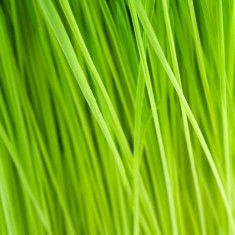Wheatgrass
$7.00Price
Wheatgrass comes from the cotyledons of a plant called tritium aestivum (common wheat plant), a subspecies of the Poaceae family. The western world began to consume wheatgrass in the 1930’s after an American agricultural chemist named Charles F. Schnabel experimented on wheatgrass’s health properties. However, ancient cultures such as the Egyptians consumed wheatgrass; it was considered to be a sacred plant due to its health benefits. Wheatgrass is generally grown outdoors and the blades are snipped off when the leaves split, called the jointing stage. During the jointing stage the plant hits its peak nutritional value.
Dr. Charles F. Schnabel continued to advocate for the benefits of wheatgrass and conducted experiments that exposed its fantastic health properties.
Details
Wheatgrass contains high concentrations of vitamins, minerals, vegetables fiber, essential amino acids and phytonutrients. Wheatgrass is made up of 70% chlorophyll, which may contain benefits known to aid with cancer prevention, appetite suppression, and anti-aging properties. Chlorophyll increases oxygen supply to the human body’s cells and tissues, which contributes to cell regeneration, and reduces symptoms of fatigue.
Wheat grass (per oz.) contains 120 calories, 8 grams of dietary fiber, 240% vitamin A, 93% vitamin C, 356% iron, and 12% calcium. It also contains 8 grams of protein. (% based on RDA).
Wheatgrass has 98 of 102 elements found in soil. The list includes phosphorus, calcium, iron, magnesium, potassium, essential enzymes, and 19 amino acids. It contains more vitamin A and C than oranges and carrots and is rich in vitamins E, K, and B.
Wheatgrass may also be considered for removal of heavy metals, recreational and pharmaceutical drugs, as well as cancer inducing agents from the body. It may also be used to remove toxins from the liver and blood. It has also been known to reduce high blood pressure, improve digestion, and lower cholesterol. Wheatgrass has been considered to treat various disorders of the urinary tract, including infection of the bladder, urethra. It can aid in the health of one’s prostate by preventing kidney stones and is used as a mild diuretic along with lots of fluids to increase urine flow.
Other considerations include treatment of respiratory tract complaints, including the common cold, cough, bronchitis, fever, and sore throat, tendency toward infection, gout, liver disorders, ulcerative colitis, joint pain, and chronic skin problems (eczema, psoriasis, acne, dandruff, skin irritation and sun burns).

